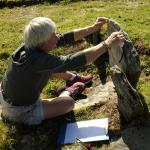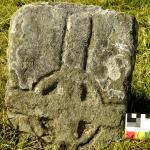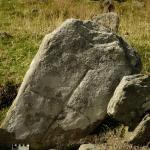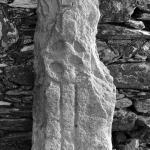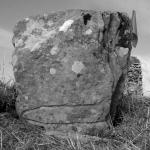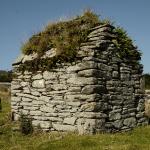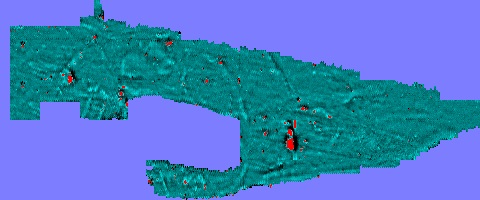We returned to Inishowen for our third consecutive year in late August 2014. The aim was to re-survey the area around Cooley Graveyard, near Moville on the shores of Lough Foyle – but this time at a much higher resolution. We also had the benefit, thanks to Newcastle University’s Archaeology Department, of a laser theodolite. So we have begun (it’s a long process) to plot all of the thousand or so graves in the cemetery, to see if any patterns emerge that will tell us more about its complex history. In the process we have discovered and recovered, with our Moville colleague Martin Hopkins and others, another dozen or so early crosses inscribed on stones in the cemetery. Before Martin galvanised his local community to clear it five years ago, the cemetery was head-high in weeds and thistles – you could not get into it. Now, it’s visited not just by archaeologists, but also local school children, heritage groups and tourists following Inishowen’s Wild Atlantic coastline.
Three of the crosses (two of them shown here) are skeuomorphic – that is to say, they copy in a new material (stone) a feature from another material (wood): crosses that once had sharpened points, carved from wood and driven into the ground as memorials, have been translated into stone carvings but keeping the now merely decorative feature of the sharpened stake. This sort of thing really gets archaeologists excited. Sad but true.
The geophysicists, despite spending six days fending of five very frisky half-ton Charolet bullocks, have produced the spectacular results you see here – a complex, rich invisible sub-surface landscape of enclosures (the so-called monastic vallum) that lie outside the cemetery (the blank bit in the missle) and round and rectangular houses. These, added to what we already know of Cooley’s high cross and mortuary house, make Cooley a very special place for us to investigate in the future. 